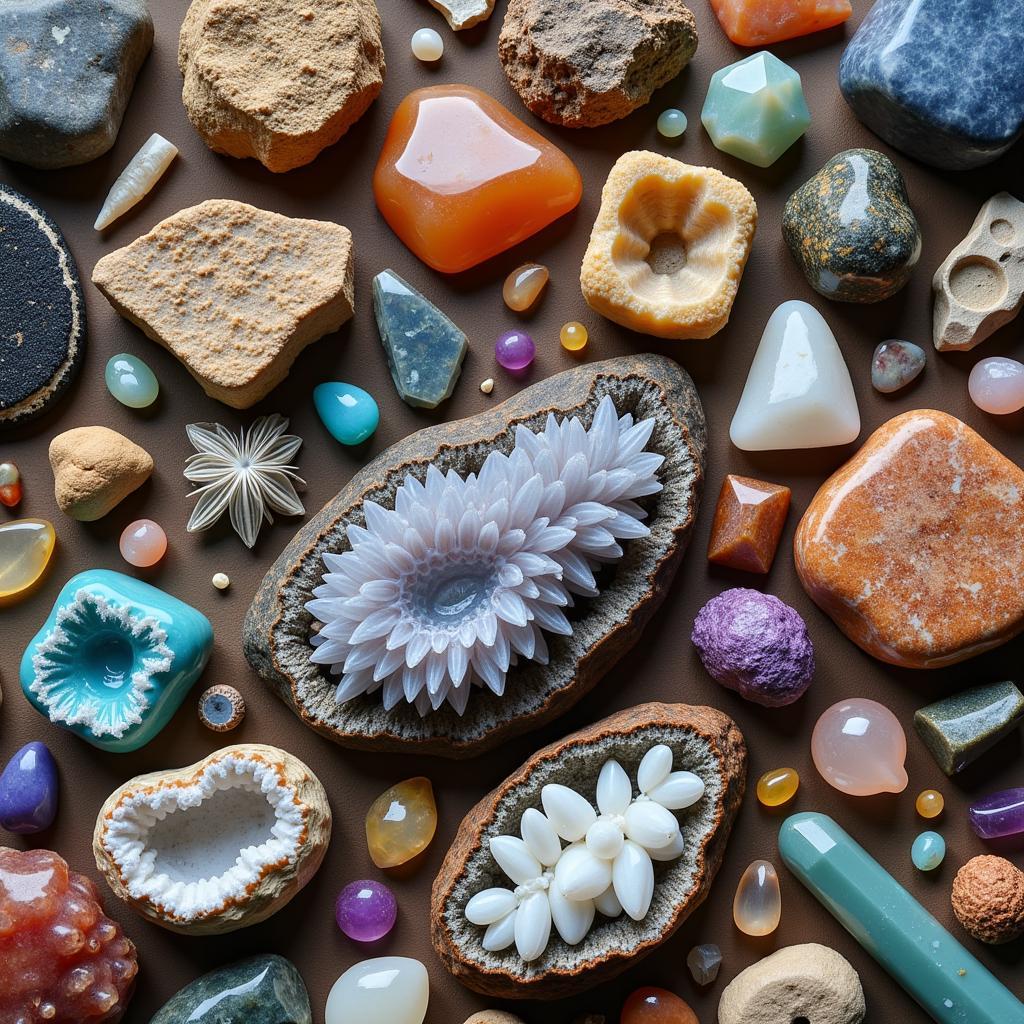The Ultimate Guide to Finding and Identifying Collectable Rocks
October 22, 2024Collectable Rocks, from vibrant gemstones to fascinating fossils, have captivated collectors for centuries. Whether you’re a seasoned geologist or just starting to appreciate the beauty of the earth beneath our feet, there’s a world of collectable rocks waiting to be discovered.
 Assortment of Collectable Rocks
Assortment of Collectable Rocks
Why Collect Rocks?
The allure of collectable rocks lies in their unique beauty, historical significance, and scientific value. For some, it’s the thrill of the hunt, unearthing a hidden treasure from the earth. For others, it’s the joy of learning about the geological processes that formed these natural wonders over millions of years.
Types of Collectable Rocks
Collectable rocks can be broadly categorized into several groups:
- Minerals: These are naturally occurring, inorganic solids with a defined chemical composition and crystal structure. Popular examples include quartz, amethyst, and pyrite.
- Crystals: These are minerals that have formed with a distinct geometric shape. Their clarity, color, and energy make them highly sought after by collectors.
- Gemstones: These are minerals that are prized for their beauty, durability, and rarity. They are often cut and polished to enhance their brilliance and used in jewelry making. Some famous gemstones include diamonds, rubies, and sapphires.
- Fossils: These are the preserved remains or traces of ancient life, such as bones, shells, or footprints. Fossils offer a glimpse into the Earth’s prehistoric past and are highly valued by collectors and scientists alike.
Where to Find Collectable Rocks
Finding collectable rocks can be an adventure in itself. Here are a few places to start your search:
- Beaches: The constant churning of the ocean can uncover interesting rocks and shells.
- Rivers and Streams: The moving water can expose rocks and minerals that were once buried underground.
- Mines and Quarries: These locations offer a concentrated source of minerals and crystals, but it’s important to obtain permission before entering.
- Rock Shops: These specialized stores offer a curated selection of rocks, minerals, and fossils from around the world.
Identifying Your Finds
Once you’ve collected some rocks, it’s time to start identifying them. Here are a few key characteristics to consider:
- Color: The color of a rock can provide clues about its mineral content.
- Streak: The color of a rock’s powder, obtained by rubbing it on a streak plate, can be more telling than its external color.
- Hardness: A rock’s resistance to scratching can help determine its mineral composition.
- Cleavage and Fracture: How a rock breaks can be a distinguishing feature.
- Luster: This refers to how a rock reflects light (e.g., metallic, glassy, earthy).
Tips for Starting Your Collection
- Start small: Focus on collecting a few quality pieces that you truly love.
- Do your research: Learn about the different types of rocks and minerals that interest you.
- Join a club: Connecting with other collectors can enhance your knowledge and enjoyment.
- Label your finds: Keep track of where you found each rock and any interesting details about it.
- Display with care: Protect your collection from dust, sunlight, and extreme temperatures.
Conclusion
Collecting rocks is a rewarding hobby that can spark a lifelong passion for the natural world. By following these tips, you can embark on your own rock-collecting adventure and build a collection that you’ll cherish for years to come.
For any assistance, please contact us at Phone Number: 0915117117, Email: [email protected] or visit us at: Hamlet 3, Binh An Village, Phu Thuong Commune, Viet Nam, Binh Phuoc 830000, Vietnam. We have a 24/7 customer support team.